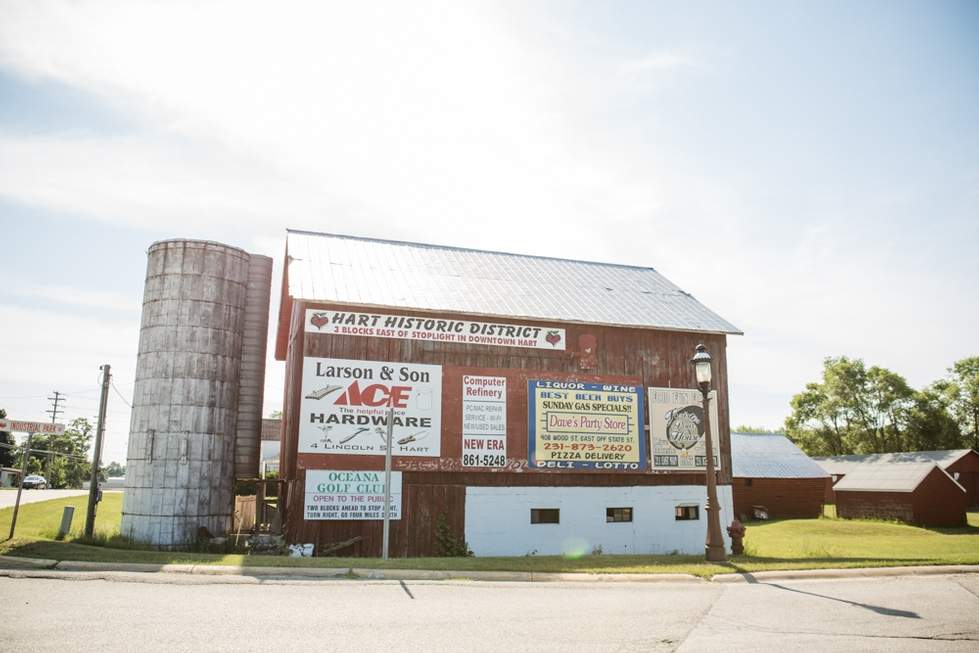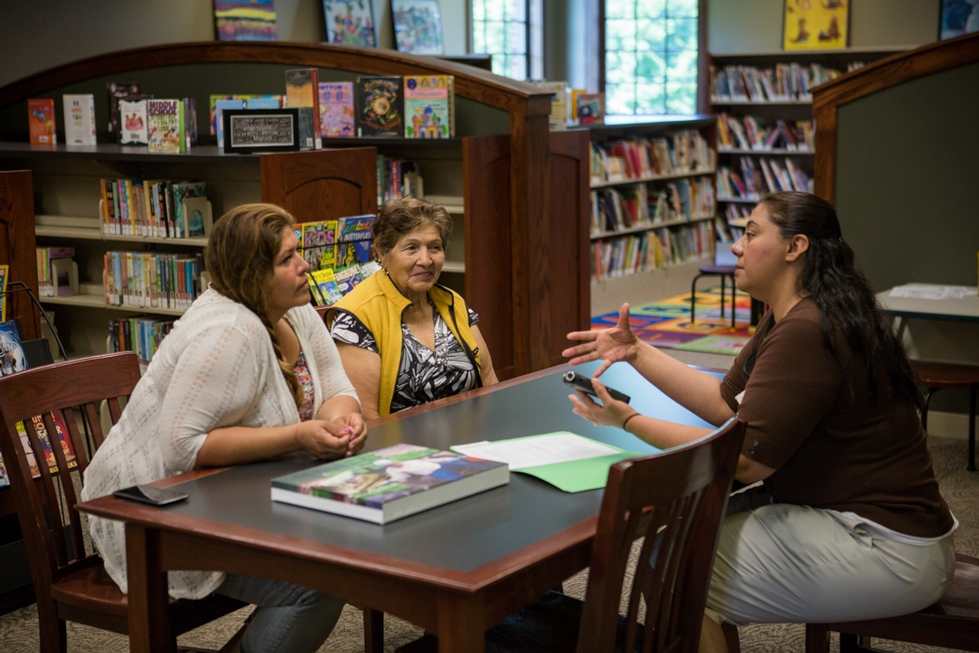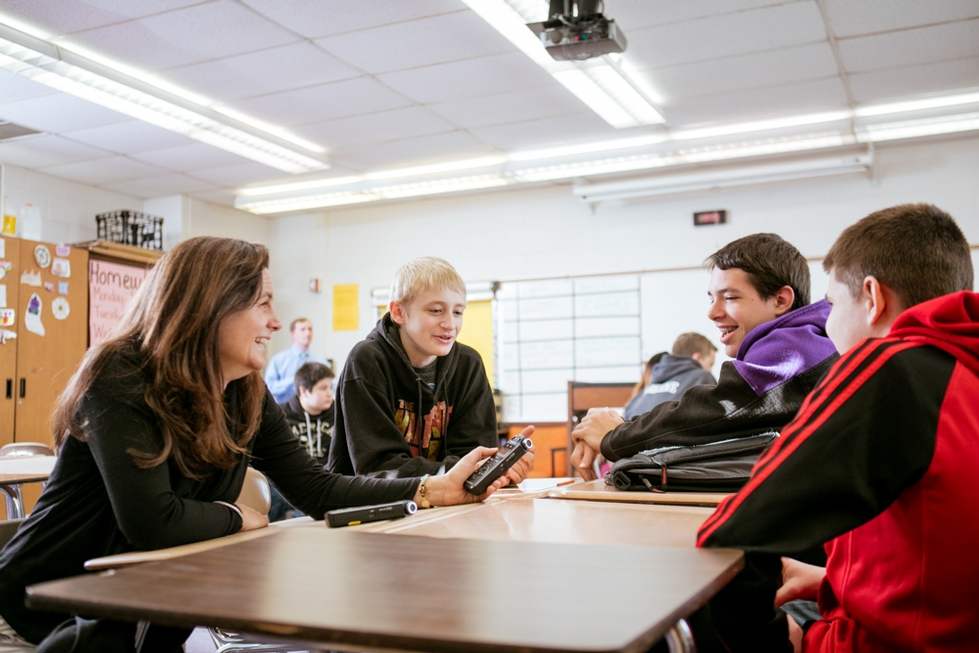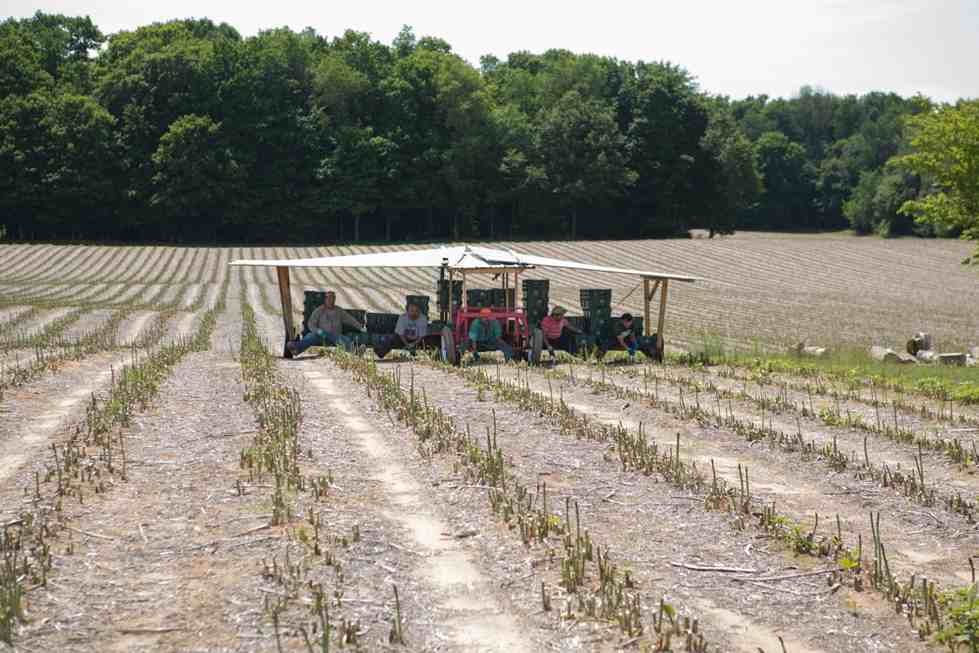Life stories
Lakeshore county collects oral histories of residents for archives
Everybody has a life story to tell. The elements of these stories vary, of course, yet they carry a similar theme of how family histories and decisions influence one’s life.
When a community’s story is told, a theme of shared experiences among people who live there prevails. Residents in Oceana County, with help from Grand Valley’s Kutsche Office of Local History, will tell the story of the county and its rich history as the state’s top producer of asparagus and tart cherries for an oral history archive. From business owners to large- and small-scale farmers to migrant and seasonal workers, agriculture touches nearly the entire population of 26,245. The county, on the shore of Lake Michigan, is also top-ranked for production of strawberries, apples and tomatoes.

Rural Oceana County is known as a top producer of asparagus and cherries. Residents are working with the Kutsche Office of Local History to document their oral histories and collect family photos and materials for a permanent archive.
photos by Bri Luginbill
To frame the story, the Kutsche Office has partnered with the Oceana County Hispanic Center and the county’s Historical and Genealogical Society. Trained volunteers spent the summer collecting oral histories of county residents or anyone with a connection to the area to create a permanent archive of interviews, family photos and documents. The project was funded by a $11,500 Common Heritage Grant from the National Endowment for the Humanities, which was matched by Grand Valley.
Melanie Shell-Weiss, associate professor of liberal studies and former director of the Kutsche Office, is the project’s lead researcher. She said an underlying theme of the project is helping to build connections among the county’s youth, migrants and year-round residents.
Michigan has the fifth largest migrant population in the country, and Oceana County ranks third (2,480), according to the state’s Workforce Development Agency.
“Non-Latino residents are less likely to understand the deep history of their Latino neighbors or their shared community ties,” Shell-Weiss said.
The migrant chapter
Eva Berumen, director of the Hispanic Center, said the story of migrants is key to the project, and it’s a story she knows well. Berumen’s parents were migrants who traveled from Texas to Michigan to pick produce. She remembers traveling with her family to Iowa and Minnesota as a young girl.
“We moved to Walkerville when my dad found a permanent job. I was 9,” said Berumen, who graduated from Pentwater High School and Aquinas College.
José Berumen was born in Mexico and attended school there through the sixth grade. Eva said her grandfather helped her dad obtain U.S. citizenship, and later, her dad met Eva’s mother in Oceana County.

Eloisa Vasquez, far left, recounts her family history for an Oceana County archive project.
Berumen saw her life portrayed on the movie screen when she watched the 2015 Disney film “McFarland, USA,” which starred Kevin Costner as a white high school coach in a predominately Latino California town. Many of the stars on his cross country team were seasonal or migrant workers.
“There was a scene in the movie where the mother comes in a truck to pick up her kids after school and takes them away from practice so they can pick produce,” Berumen said. “My older cousin was that person for me. She would pick all of us kids up after school and bring us to where our families were picking.”
During elementary school, Berumen would pick asparagus with her parents but only after her homework was done. “We were fortunate. Our family valued education and we had to finish our homework first before helping,” she said.
José Berumen was living in Minnesota when he finished vocational training in welding and general maintenance. “My dad couldn’t speak English, and was almost kicked out of the training program when one professor advocated for him and said he was the best student in the class,” Berumen said. “That professor got my dad a private tutor in English.”
His vocational training eventually led him to Hart, where José found a permanent job at Slocum Brothers Tree Farm, doing general equipment maintenance.
“There are a lot of tourists here in the summer, and some in the winter for snowmobiling, and they don’t know the history of this place,” Berumen said. “The people who live here and have worked here are what makes the county what it is today.”

Courtney Sherwood, from the Kutsche Office of Local History, interviews students at Shelby Middle School for the oral history archive.
Young voices
Through happenstance, about 100 eighth graders from Shelby added their voices to the oral history collection.
Their English teacher, Kevin Joffre, is a 2015 Grand Valley graduate. Joffre was introduced to Shell-Weiss while at a campus event and expressed interest in helping with the project. Joffre was researching ways to teach information literacy to his students that would be meaningful to them.
“Many of my students are from migrant families,” he said. Shell-Weiss shared with Joffre newspaper articles from 1993 by a journalist who embedded himself with migrants as they traveled from Texas to Michigan.
The journalist was Dave Harmon, a cousin of Courtney Sherwood, who works in the Kutsche Office. Later, via Skype, students had an opportunity to ask Harmon questions.
“We found in the articles there was a lot of racism at that time toward seasonal workers and the schools were not welcoming,” Joffre said. His students shared different opinions about today’s cultural climate. “Some students said migrant families were not seen as a separate group, and others disagreed,” he said.
Shell-Weiss, Sherwood and Penny Burillo, chair of the Hispanic Center, visited Shelby Middle School in April to introduce the oral history project to Joffre’s eighth graders, then train them to interview each other.
“They really connected to it,” Joffre said. “To be able to capture the voices of 13 and 14 year olds was great. Not a lot is written about that age group.
“We captured a snapshot of what life was like for a middle school student in Shelby.”
Project roots, future
The roots of the oral history project date back to 2011, when Andrew Schlewitz, assistant professor of Latin American Studies, taught a course about Latin American migration and Latino/a identities. Schlewitz and four students from that class conducted interviews with Oceana County migrants for a service learning project.
Schlewitz and Nora Salas, assistant professor of history, were in Hart, the county seat, on June 18, interviewing residents during a daylong “History Harvest” at the community center and library. All interviews, photos and documents will be housed at Grand Valley’s Special Collections and Archives and at the Oceana County Historical Society. Shell-Weiss expects the collection of materials to be completed by December.
Walter Urick is in his second year as president of the historical society. He said the key to interviewing people for an oral history is to first interview yourself to better understand the questions about family, work, education and challenges.
Urick has lived in Hart since he was 1. After attending law school, he served as the Oceana County prosecutor and later probate/family court judge.
A first-generation American, his family emigrated from Belarus. “Basically, the bus we were on broke down in Hart, and that’s why we stayed,” he said, jokingly. Urick’s father bought a small farm near Hart and later, with a partner, opened the county’s first dry cleaning business.
As a young boy, Urick picked cherries, pickles and strawberries for about eight years until he was 15. “That’s what a kid in this community did to make money,” he said.

He finished law school at the time the Vietnam War was winding down. “I was recruited back here to be the prosecutor and got a critical occupational deferment because no one wanted to practice law in Hart,” he said. “So I came back for a four-year commitment, and ended up with a 42-year career here.”
Burillo, who helped establish the Hispanic Center about 13 years ago, said stories like Urick’s and Berumen’s helped create the rich history of Oceana County. “You tend to think that your family’s background isn’t special, but every one of us is unique and has an interesting story to tell,” Burillo said.
A community dialogue about the oral history archive is planned for September in Hart. For more about the project, visit gvsu.edu/kutsche.
